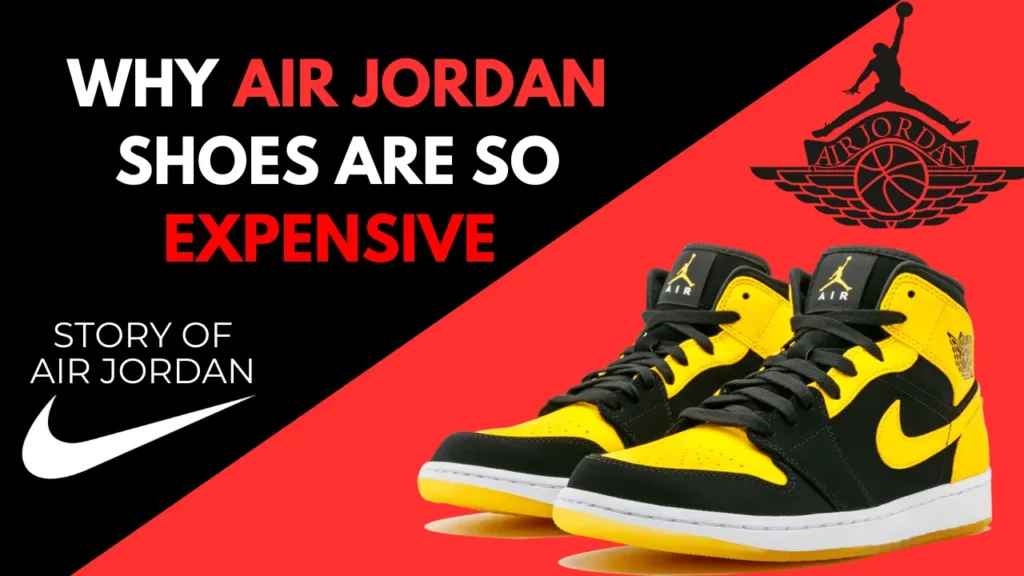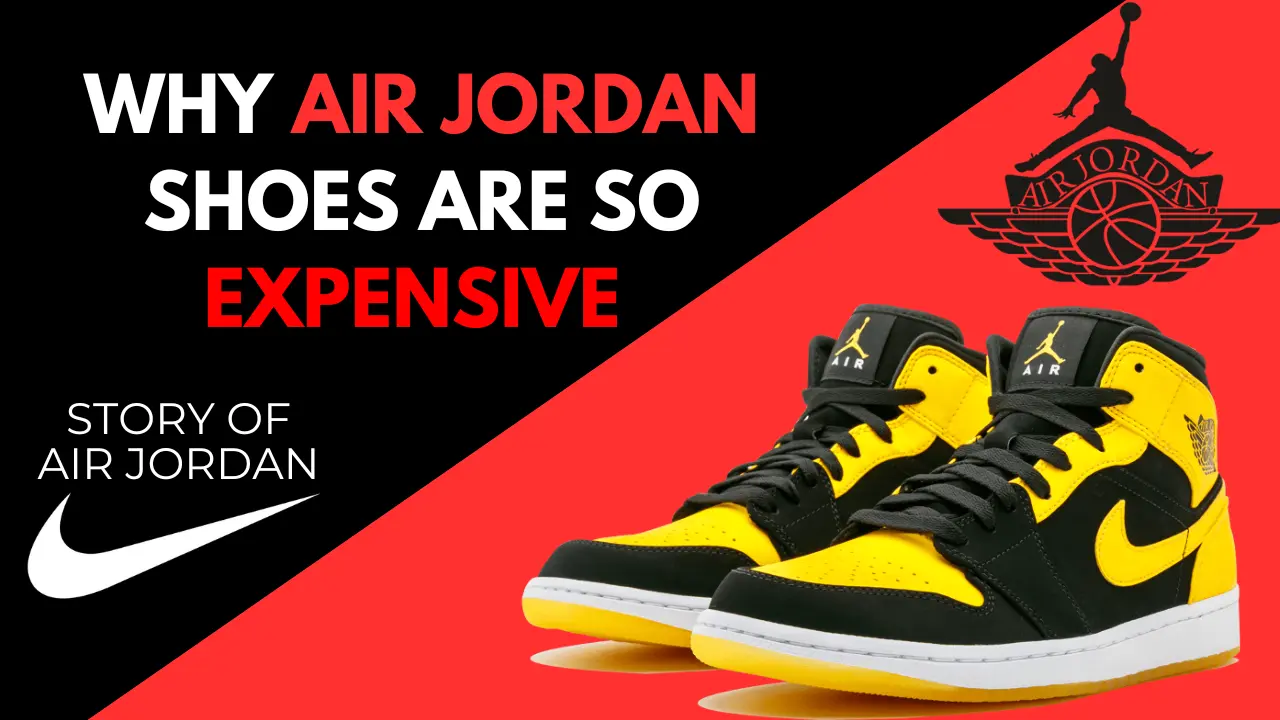In fashion and sports, few items have achieved the iconic status of Air Jordan sneakers. With their unique blend of style, innovation, and a storied legacy, these shoes have become more than just footwear; they symbolize a cultural phenomenon that transcends basketball. From viral memes mocking their price tags to auction records that astound even the most dedicated sneakerheads, the allure of Air Jordans continues to captivate audiences worldwide. But what about these sneakers makes them so desirable—and often so expensive? Join us as we dive into the fascinating journey of Air Jordan, exploring its origins, cultural impact, and the secrets behind its enduring success.

In 2024, six Air Jordan were auctioned. Do you know how much these shoes were sold for? Eight million dollars, i.e., 667 crores. The amazing thing is that this was not the first time because last year, in April 2023, Air Jordan 13 was auctioned. An auction was conducted, and these shoes were also sold for 2.2 million dollars, i.e., about Rs. 1818 crores. The most surprising thing is that despite being so expensive, they go out of stock within a few seconds.
Table of Contents
The Fascination with Air Jordan
The question arises: Why are Air Jordan shoes sold so expensively? Why are people really into them, and why did the National Basketball Association ban them?
Resilience During the Pandemic
In 2020, when the world was struggling with the COVID-19 pandemic, the sales of every category in the sports sector went down. However, Air Jordan achieved growth of almost 20% even in those difficult times, which generated significant revenue for Nike. The question arises: What is the secret of its success?
Quality vs. Legacy
Now, most people might feel that the quality is very low. Undoubtedly, the highest-quality material is used in making these sneakers, and the designs of these shoes are quite innovative. But are they so expensive that a pair of shoes reaches lakhs? Not at all, right?
In a sense, what makes these sneakers so expensive is Air Jordan’s legacy, which was not created in two to four days. Behind it are many years of hard work, planning, and strategizing.
The Birth of Air Jordan
This is the beginning of Air Jordan’s story. It happened in 1980, when Eddie Das and Converse ruled the basketball field in America because all the popular basketball players of that time, like Larry Bird, Magic Johnson, and Kareem Abdul Jabbar, wore signature shoes of these two brands.
In a way, the meaning of signature shoes in basketball is to make that player its brand ambassador because, during the game, that player wears shoes of the same brand, and in return, the company pays him money. Basketball has been popular in America since the beginning; hence, every company making sports shoes wanted to enter this space.
Michael Jordan’s Rise
During the ’80s, Dad Ten and Converse had already become established brands. Meanwhile, the biggest legend in basketball history, Michael Jordan, had not yet made any special identity for himself. However, they say only a jeweler can taste a diamond, and the work of a jeweler here was done by Sunny Baker, who worked in marketing for Nike then. Sunny introduced Jordan to his college, saw him playing basketball in 1985, and recognized at first sight that Jordan would be the next star of this game.
When Jordan was selected in the NBA in 1984, Sunny Bakro only wanted to give Jordan his Nike contract. Although it was quite difficult, it was a risky decision because Jordan was not a big player then and had not played any professional games until then. Still, Sunny somehow convinced the management to work with Jordan. However, Jordan still had to be confident.
The Competition
Like most youngsters of that time, Michael Jordan was a fan of A.D. Das, and he used to say that he should get the first contract of his career only from Adidas. However, Adidas gave a contract to its founder a few years ago, losing Adolf Dollar, which led the company through a bad phase then. The top management of this company wanted to deal with a player taller than Michael Jordan; hence, Adidas did not make any serious offer to Jordan.
After ten years, Jordan had another option: Converse because he had used Converse shoes throughout his career. Converse made an offer to Jordan, but he did not like it because Jordan wanted Converse to create a completely new range of shoes and evolve in design and innovation. However, Converse was already working with star players like Larry Bird and Magic Johnson, so they did not give much attention to a new player like Jordan. As a result, Jordan rejected Converse’s offer.
Nike’s Persistence
During all this, Nike approached Jordan again and again, but they ignored him because, at that time, he had not yet played in the NBA. The best thing about this offer to Jordan was that Nike was completely open to his suggestions; that is, he could keep evolving in the design and innovation of these shoes. So, he immediately signed the contract. This is how the legacy started, and it continues to this day.
Contract Conditions
Because Nike was taking a huge risk on Jordan, they also had some conditions. The condition was that within his three years in the NBA, Jordan should achieve one of these three accomplishments: Rookie of the Year Award, Second All-Star Award, and maintaining a game average of 20 points in the NBA season. If Jordan could not achieve any of these three accomplishments, then this contract would have been terminated. Now, the entire pressure was on Michael Jordan, and work on making shoes started with these conditions.
Also, this new lineup of shoes got the name Air Jordan because Nike fills the air in the soles of its shoes, making them feel lightweight and increasing their cushioning. Nike launched Air Jordan, which was completely different from other basketball shoes of that time. At that time, almost all basketball shoes were completely white, but the Air Jordan One was made with a combination of black and red, which caught everyone’s attention.
Controversy and Bans
Even so, everything was going according to plan, but then Nike caught the attention of the NBA authority, which banned Air Jordan 1 as soon as it was launched. At that time, the NBA rule was that all shoes had to be 51% white in aesthetics, whereas Air Jordan 1 had only 23% white. The very first idea of Air Jordan was to get banned like this.
If there were any other company here, perhaps it would have quietly changed the color of its shoes to avoid controversy, but in the name of Nikebetterworld.com, Band One was born. Also, Nike asked Michael Jordan to wear the same shoes in every match. However, for this, Michael Jordan was fined $5000 in every game, which Nike could bear without any problem because they did not mind the publicity of this controversy.
Audi Success Story: Case Study of Audi and Future of Luxury Mobility
Mercedes-Benz: World’s First Car Success Story
Ford Sucess Story: The Incredible Rise of Henry Ford
The Impact of the Ban
Friends, the truth was that Air Jordan One was not only banned but also penalized. Nike deliberately spread the rumor of this happening through its commercial. Their bet on Michael Jordan also turned out to be completely in their favor. In fact, Nike had set in the contract that Michael Jordan achieve one of the three accomplishments. Michael Jordan achieved all three of those accomplishments in his very first season.
Michael Jordan made millions of people crazy in the first season of the NBA. The result of all this was that within just six weeks of its launch, $3 million was earned, and in three years, Air Jordan One became so popular that within one year, its sales crossed 126 million dollars. It was such a big success that Nike’s brilliant design and Michael Jordan’s success were also a big reason for its success.
The Sneaker Culture
In the late ’70s, hip-hop culture started in America, and the artists who made hip-hop pop music adopted funky sneakers as an important part of their style. Their fans also began to wear sneakers, leading to the sneaker culture in the United States, where these people were known as Sneaker Heads.
These people did not just buy sneakers to wear; they also collected them, just like hobbyists collect cars and bikes. The most special thing about Sneaker Heads was the competition to buy new sneakers. As soon as a new sneaker was launched, they would buy many units and sell it to other sneakerheads at a markup. Due to this, the price of these shoes would increase from 100 to a thousand times.
Nike’s Strategy
When Nike prepared the Air Jordan lineup, it kept one thing in mind: to win the hearts of consumers, it focused on both performance and the looks of its shoes. When Air Jordan was launched, Sneaker Heads went crazy about its design and look.
They selected two of their best designers, Peter Moore and Bruce Kilgore, to design Nike’s shoes. Peter Moore created the Air Jordan One, and Bruce Kilgore designed the Air Force One, which people could wear with a three-piece suit.
Challenges with Air Jordan 2
After several months of hard work, they designed this shoe. I know many of you must have liked Air Jordan 2. The same happened at the time of its launch in 1986; the only problem was that many people did not like it, including Michael Jordan. If you look carefully, Nike’s shoes were not used in this shoe, which was surprising.
To improve quality, it was produced in Italy, which made the production cost very high. It was launched at a retail price of $100, which was a huge amount at that time. The retail price of a Jordan 1 was $65; now, it was not that the company may have suffered many losses because of Air Jordan 2. The only thing was that it was not as successful as Air Jordan 1.
A Shift in Design for jordans shoe
According to Michael Jordan, it was too heavy, and he was disappointed that his advice was not valued in the design of Air Jordan. So, after completing his five-year contract in 1989, he decided to dismiss Nike’s Kilgore from the design of Air Jordan and replace him with a young designer, Tinker Hatfield, who was entrusted with the task of designing Air Jordan 3.
Finally, after several months of hard work, this shoe was ready, and now it was time to show it to Michael Jordan. For this work, Tinker himself took a flight to California. As expected, the first glimpse of this shoe won the heart of Michael Jordan because all his requirements were kept in mind while making it.
The Iconic Jump Man Logo
According to Michael’s requirements, the weight of this shoe was kept low, and it was a mid-top shoe. The Air Jordan 3 was the first sneaker to use Jordan Brand’s iconic Jump Man logo. The Air Jordan 3 proved to be a lifesaver for Nike. It completely changed Michael Jordan’s intention to separate from the brand.
Nike’s Marketing Strategy
Sneaker Heads liked it very much. After this success, Nike never reduced their prices or offered any discounts. That is why when a person purchases shoes worth $1000, they believe that their price is only $1000 because if they want, they can keep this shoe for some time and sell it at a higher price.
As we’ve seen, the journey of Air Jordan is a testament to the power of branding, innovation, and cultural relevance. From Michael Jordan’s rise to stardom to the sneakers’ explosive popularity in sports and fashion, Air Jordans have left an indelible mark on history. The combination of top-tier quality, striking design, and a legacy built on strategic marketing has not only elevated the sneaker culture.
Still, it has also created a community of passionate fans eager to own a piece of this history. Whether you’re a die-hard sneakerhead or intrigued by the phenomenon, there’s no denying that Air Jordans have secured their place in the pantheon of iconic footwear. So, the next time you see a pair of these legendary shoes, you’ll understand the story, the hype, and the value behind them.










